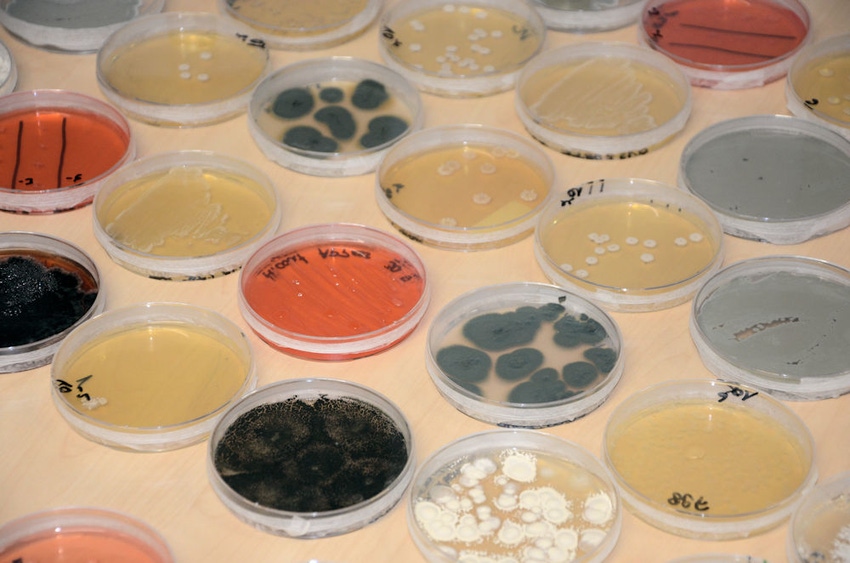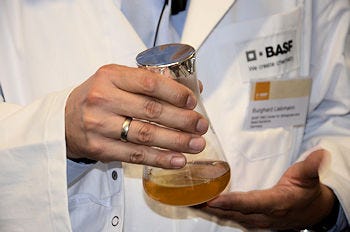September 7, 2016

Over the last few years you'd be pretty sure we're heading for a biological future in the crop protection business with the way crop protection companies have acquired companies, or entered into marketing agreements for these new-fangled products. BASF has been aggressive in this area with its purchase of Becker Underwood a few years ago, and in creating its functional crops division.
During a media event in Germany, Farm Industry News got a look at the company's seed treatment and biologicals development work, which shows how an old-line crop protection company is embracing new tools.
First, functional crop products are the fourth after herbicides, fungicides, insecticides. But in some cases the functional products have fungicidal or insecticidal properties. One key advantage of a bio control product is that it usually doesn't work on a single site of action, but instead hits pests in multiple ways, reducing the potential for resistance to develop.
Second, creating bio-based products brings new kinds of issues to companies that in the past created products the old-fashioned way – through manufacturing.
A key benefit of biologicals is that in some ways they're easier to get approved by regulatory authorities who tend to view these products as more natural. In some cases they're very natural, like beneficial nematodes for slug control, or fungicidal compounds that leave no residues.
For example, Serifel, a biobased fungicide, can be sprayed on food crops even close to harvest with no worries of residue issues at sale time. During a walk around the BASF Research and Development Center for Biologicals and Seed Solutions, Farm Industry News got a look at what it takes to find, develop and bring a bio-based product to market.
Freezers, dishes and flasks

It all starts with a beaker, where biologicals selected for production start their journey.
In the traditional chemical based world of crop protection, products are "made" while in the case of biological products they're grown. As noted in the photos with this story, the use of Petri dishes and flasks are more common in biological formulation than you'd find in traditional chemistry areas.
Burghard Liebman, who heads up biological research work at BASF, offered a tour of the R&D facility, showing the ways initial products from beneficial nematodes, rhizobia, bacillus and even fungi are stored, tested and eventually formulated for use in the field.
This is a promising area of science where a bio-based product can do the work of more traditional chemistry, whether that's controlling a pest or enhancing plant growth. Of course, one of the more familiar bio-based products to soybean farmers would be the rhizobia in soybean inoculants that help those plants add nodules for nitrogen fixation.
But Liebman notes BASF has a "strain library" of biologicals for research. He showed off several in dishes and even pulled a sample from a freezer where biologicals can be stored. "These are living organisms," he notes. "We need to keep them alive through the screening program."
Conventional history offers biological innovation
Liebman explained that one key factor BASF offers is its rich history in chemical formulation. This knowledge can be applied to the biological side of the business to create delivery systems for these new-tech products that can help assure the living organism is ready to go when you apply it to the field.
"We have to develop processes to keep the product alive," Liebman says. He explains that this is an area where research continues.
Serifel, the biofungicide, which is also sold as Integral in a different application, is a successful product for BASF. The soybean inoculants that came from Becker Underwood are also solid performers, but the company continues to look for ways to deliver these bio tools in more effective ways, including as seed treatments.
In the Seed Treatment lab at BASF, there was a demonstration of how a treater works – no surprise to anyone that's seen one in operation. However, during the presentation, Ulf Schlotterbeck, who works in seed treatment development for the company, talked about the challenges of bringing biologicals to seed treatment.
"We're working to put biologicals on the seed, but we do that in a mixture with traditional crop protection treatments," he says. "We have to make products that are compatible."
Traditional chemistries have to work with the bioproduct, or the treatment is ineffective, with BASF's formulation know-how, they're looking at new ways for seed treatments to work, and coatings to better protect the seed and the young plant after it starts growing. "Many times the biological must grow in the soil to work, or it must move into the plant," Schlotterbeck says.
BASF is working on seed treatment research, but Schlotterbeck notes the company has no seed business, so it is providing this knowledge and expertise to a wide range of customers for the future.
Biologicals come in many forms, in the future, you may find yourself using living organisms to control pests in ways you never dreamed. Stay tuned.
About the Author(s)
You May Also Like






